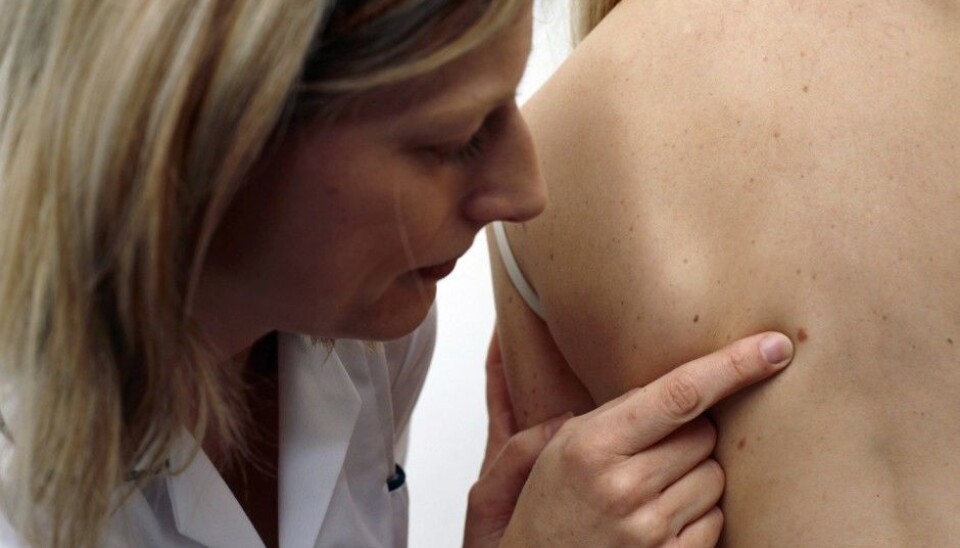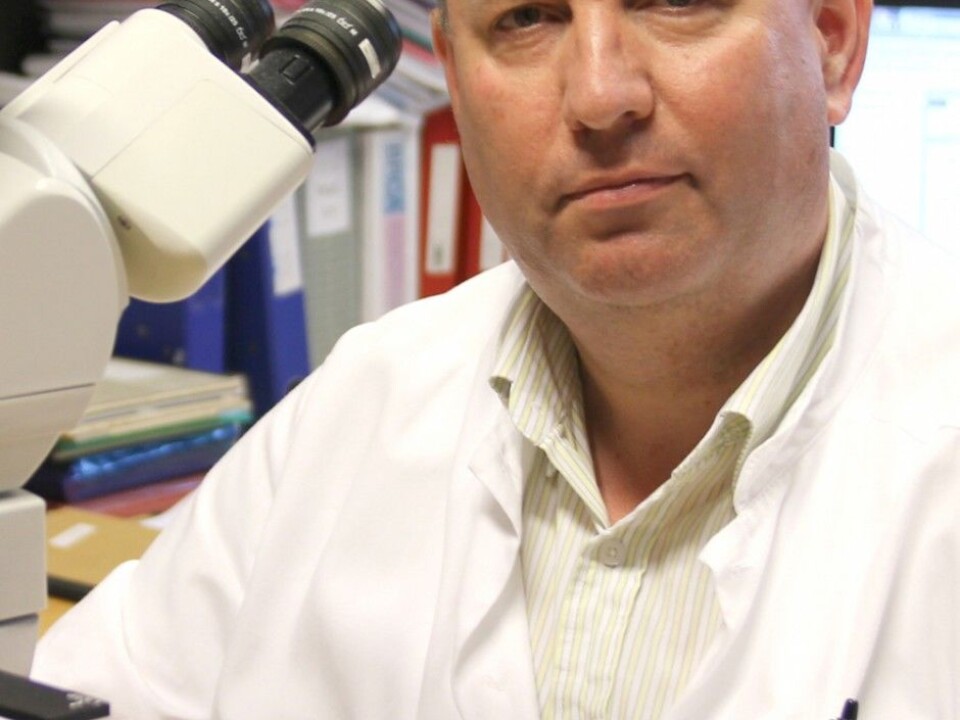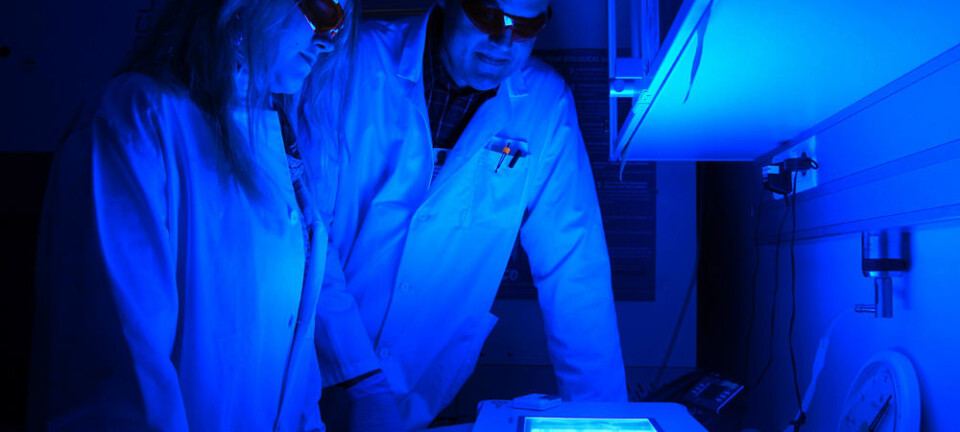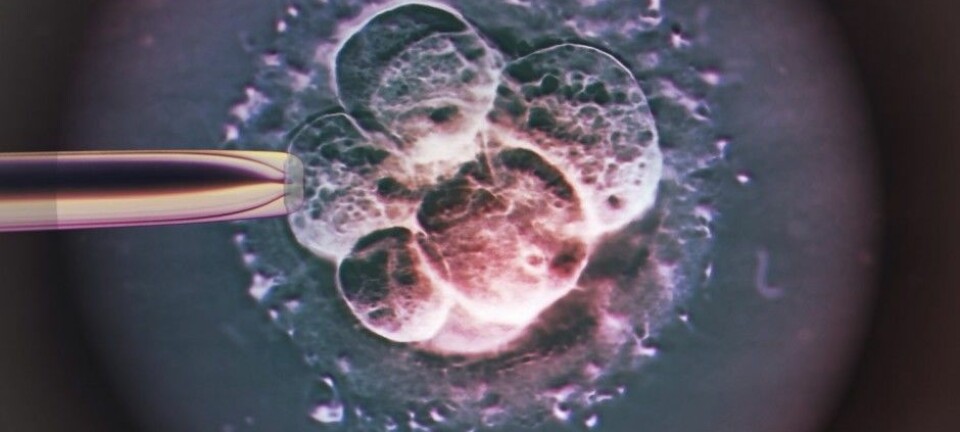
New skin cancer genes located
Scientists have discovered five new gene locations that make people vulnerable for cutaneous malignant melanomas, or skin cancer. These genes are not associated with known risk factors such as skin type or the prominence of moles a person has.
Denne artikkelen er over ti år gammel og kan inneholde utdatert informasjon.
What initiates cancer and how does it develop? Scientists continue to make headway in attempts to predict who has the greatest risk of developing a dangerous skin cancer – cutaneous malignant melanoma (CMM).
The largest study of genes linked to CMM to date comprises another step along this scientific path. Researchers have collected data from 11 studies and the resulting meta-analysis looks at the genes of nearly 16,000 persons with CMM in Europe, the USA and Australia. The genes of these patients were compared with those of 26,000 control persons who did not have the cancer.
With these five new gene sequences at specific chromosome sites, scientists now know of 20 such loci, or genetic markers, for CMM. They still need to find out exactly which genes in these loci raise the risk of cancer.
Medical researchers in Oslo and Bergen have contributed with samples from Norwegian patients. Light-skinned, sun loving Norwegians are among the most susceptible people for cutaneous malignant melanoma in the world.

“With a better understanding of the biology of melanomas we hope to tailor individual treatments better in the future,” says Lars A. Akslen, professor and director of the Centre for Cancer Biomarkers at the University of Bergen.
He is one of the Norwegian scientists involved in the study.
Unknown risk
“Perhaps once we know what genes give an elevated risk we could develop medicines that block the genes if they prove to be active in a malignant tumour,” says Akslen.
But this is a distant scenario for these newly discovered genes.

The scientists do not know yet how thee five loci raise the risk or if they become activated in CMM tumours.
But they do know they are not linked to classic risk factors such as light skin or skin with lots of moles.
“This is fascinating, as it means there are risk mechanisms that we were previously unaware of,” says Akslen.
He stresses that the best preventive measure we have is to protect ourselves from the sun.
Vulnerable to sunlight
CMM is triggered by an interaction of genetic factors and external factors, such as how much sunlight a person exposes his or her skin to.
UV-radiation harms the DNA in skin cells.
Scientists are certain that several known risk genes for CMM are linked to the regulation of skin pigmentation. The DNA of a person with little pigment is more susceptible to damage.
But some genes raise the risk of DNA injuries regardless of protective pigments, because these genetic markers are linked to a reduced ability for skin cells to repair DNA damage.
If you have these vulnerable genes you are more vulnerable to sunlight exposure than others, even if you share the same skin tone.
The Norwegian researchers have found such genes earlier in a smaller-scaled study.
Injures DNA
The researchers also find support for the importance of skin telomeres. These are caps at the end of each strand of DNA which regulate cell division. These ends lose fragments of DNA and get shorter every time a cell divides.
“It’s like a multiple-ride subway ticket which is punched every time it’s used. Once it’s fully used the cell can no longer divide,” says Akslen.
DNA flaws can be reproduced during active cell division and tumours can develop.
Cancer cells have a specialty in lengthening telomeres so that the cells can continue to divide. This raises the risk of the disease.
In this study the researchers found several gene variations that tie in with the extension of the telomeres.
Looking for a vaccine
The newly discovered genes thus provide additional knowledge about how cutaneous malignant melanoma develops.
“I think these findings with the telomeres are highly interesting,” says Steinar Aamdal, professor at the University of Oslo and head of the Oslo University Hospital’s Section for Clinical Cancer Research and Resource Development.
“This raises our understanding of how the disease starts,” says Aamdal, who previously collaborated with the Norwegian researchers behind the latest study, but not on this particular project.
He has participated in attempts to develop a vaccine which can detect and attack cells which have the capability of extending telomeres. Most cancer cells have this ability. Scientists are looking into the effects such a vaccine would have on cancer patients.
Expecting a number of risk genes
The meta-analysis also helps researchers explain a little more of the risk behind hereditary CMM, in other words, a dominant gene that can be passed down through the generations. Some 5 to 10 percent of people with such melanomas have this hereditary type.
The scientists can now explain 19 percent of hereditary CMM. But an addition of 2.3 percent means we still haven’t isolated the genetic flaws which cause most hereditary cancers.
Lars Akslen explains that the vulnerability genes are hereditary but their effects can be said to alter the risk of cutaneous malignant melanomas in an interaction of external factors, skin types and other elements.
“We expect that there are many risk genes which we haven’t discovered yet,” says the University of Bergen professor.
Get a genetic profile from your local MD?
It will be some time yet before we can visit our family doctor and get a genetic profile telling whether we run a risk of malignant melanomas.
“But with ever increasing knowledge about genetic risk markers we will see a discussion of the ethical questions connected with how closely we should map the future health of individuals,” says Akslen.
Much of the knowledge in the new study is already known. But the large numbers of patients and control persons helps scientists confirm this knowledge with more certitude.
“The strength of this study is that it is so massive. It shows what can be achieved through broad international cooperation,” says Steinar Aamdal of the University of Oslo.
“The findings do not have any immediate clinical significance, but they are an important contribution to knowledge about how cancer develops. Eventually it should be possible to identify persons who run the largest risk of developing cutaneous malignant melanoma.”
-----------------------------------
Read the Norwegian version of this article at forskning.no
Translated by: Glenn Ostling



































